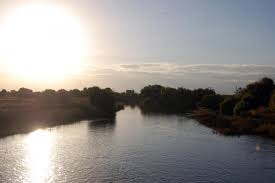Every year on March 14, thousands of people around the world lift their voices to celebrate the world’s rivers and those who struggle to protect them. The
International Day of Action for Rivers is a day to celebrate victories such as dam removal and river restoration.
It is a day to take to the streets, demonstrate and demand improvements in the policies and practices of decision makers. It is a day to educate one another about the threats facing our rivers, and learn about better water and energy solutions. Above all, it is a day to unite – by acting together, we demonstrate that these issues are not merely local, but global in scope.
History of the International Day of Action for Rivers
The International Day of Action Against Dams and For Rivers, Water and Life was adopted by the participants of the first International Meeting of People Affected by Dams, March 1997 in Curitiba Brazil. Representatives from 20 countries decided that the International Day of Action would take place on March 14 – Brazil’s Day of Action Against Large Dams.
Our aim on this International Day of Action for Rivers, is to raise our voices in unison against destructive water development projects, reclaim the health of our watersheds, and demand the equitable and sustainable management of our rivers.

 participants of the First International Meeting of People Affected by Dams that took place in March, 1997 in Curitiba, Brazil.
participants of the First International Meeting of People Affected by Dams that took place in March, 1997 in Curitiba, Brazil. 